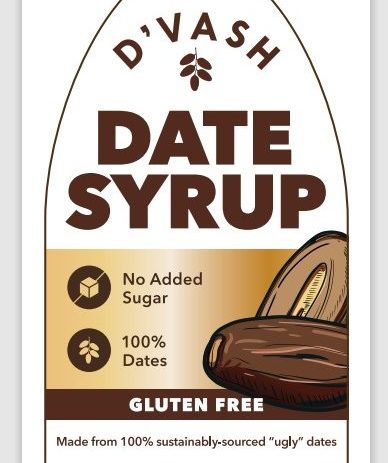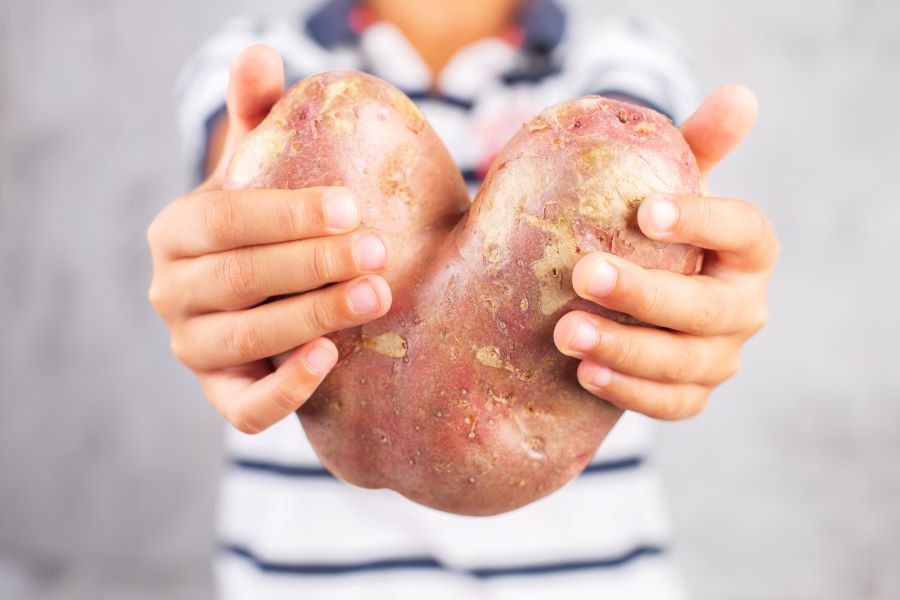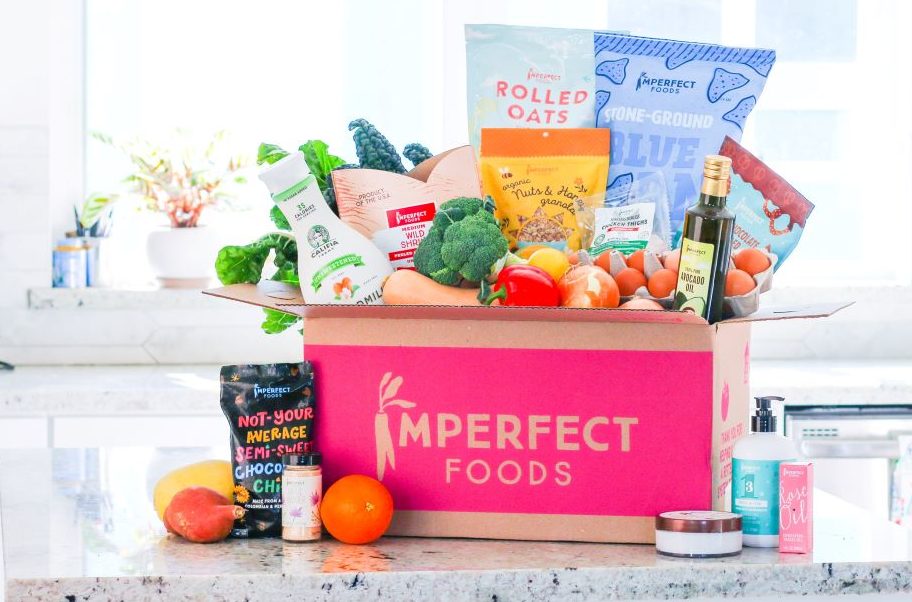When selecting produce at the grocery store, do you avoid the oddly shaped, inconsistently sized, and slightly blemished items? If the cereal box is dented on one side, do you put it back on the shelf and pick an undented container? These are perfectly natural reactions, but appearance doesn’t necessarily mean those “imperfect” items aren’t delicious. And there’s a cost to wasting imperfect groceries.
We waste an estimated 30% to 40% of the food supply in the United States. Some of this food waste “is caused simply by dumping products that are less than perfect in appearance,” explains the U.S. Food and Drug Administration website. Wasting perfectly good food is bad enough, but food waste also contributes to climate change. “Organic waste, mostly food, is the second biggest component of landfills, and landfills are the third-largest source of methane emissions.” Methane, a greenhouse gas, is 25 times more potent than carbon dioxide.
Some brands have realized the value of changing our attitude towards “imperfect” groceries. And if you’re worried that an ugly potato or carrot will bother your family or guests, check out Beach Body On Demand’s guide to cooking with imperfect produce — it’s a matter of hiding misshapen veggies in delicious recipes.
This article contains affiliate links. If you purchase an item through one of these links, we receive a small commission that helps fund our Recycling Directory.
A Fresh Look at Ugly and Imperfect Foods
When the folks from D’Vash Organics were redesigning the label of their date syrups, they decided to display an interesting note about the product: “Made from 100% sustainably sourced ‘ugly’ dates.”

Several years ago, “ugly” wasn’t a description that would’ve been featured on the package, says D’Vash Organics president Brian Finkel. But today, repurposing flat or otherwise imperfect dates for D’Vash Date Syrup is something lots of shoppers appreciate, he says.
Food products referred to as “ugly” and “imperfect” have a certain cachet for consumers who want to shop sustainably and help reduce food waste.
There’s Value in Imperfect Groceries
Some brands are focusing their attention on those less-than-perfect items. They promote an appreciation and respect for odd-shaped, broken, and blemished foods that are perfectly edible. And they provide a market for surplus foods, items that are ripe and ready to eat, and other items that traditional stores don’t want for various reasons.
A growing number of food companies that cater to customers who are happy to look past minor imperfections in their groceries.

Imperfect Foods
Imperfect Foods is an example of a food-delivery service emphasizing the value of imperfect items. Its distribution area includes 40 states.
Maddy Rotman, head of sustainability at Imperfect Foods, explained on the Earth911 podcast that the company is working to extend its impact by electrifying its delivery fleet, crafting delivery routes to minimize transportation, and ensuring its staff have comprehensive benefits.
Examples of “imperfect” grocery items include:
- Imperfect Spaghetti: Pasta machines take a few minutes to warm up. This means that the first few batches of pasta might come out too short or too long. While supermarkets deem these irregular shapes “unfit” for shelves, Imperfect Foods deems them “artisanal,” “unique,” and, most importantly, “delicious.”
- Imperfect Dried Mango: The mangoes used for the Imperfect Foods favorite are considered “too sunburnt” from sun exposure to be sold in stores.
- Imperfect Dark Chocolate-Covered Pretzel Pieces: For every batch of pretzels that get covered in chocolate, a good portion of them break during the process. But they taste just as delicious as unbroken pieces.

Browse The Imperfect Aisles
A variety of online imperfect food delivery programs are available. Takes some time to check the price and quality of these more sustainable options before you decide to go with traditional options. A few sites to start with, include:
And if you are a grocer looking for imperfect produce sources, check out Full Harvest, which also provides farms and produce companies a path to sell their uglier produce.
More Ways To Reduce Food Waste
If you’re working to reduce food waste, consider including imperfect groceries in your diet — whether you select the oddly-shaped carrot at your local market or subscribe to a delivery service specializing in products with slight imperfections.
The FDA offers additional recommendations for reducing food waste, including:
- Don’t buy more food than can you can use before it spoils.
- Use a refrigerator thermometer to be sure the temperature is at or below 40 degrees Fahrenheit to keep foods safe. The temperature of your freezer should be 0° F or below.
- Avoid “overpacking” your fridge. Cold air must flow around refrigerated foods to keep them properly chilled.
- Use your freezer. Freezing is a great way to store most foods to keep them from going bad until you are ready to eat them.
- To keep foods safe when entertaining, remember the two-hour rule: Don’t leave perishable foods out at room temperature for more than two hours unless you’re keeping hot foods hot and cold foods cold. If you’re eating outdoors and the temperature is above 90° F, don’t leave out perishable foods for more than one hour.
Editor’s Note: This article was originally published on November 9, 2021 and updated in June 2024.
- SEO Powered Content & PR Distribution. Get Amplified Today.
- PlatoData.Network Vertical Generative Ai. Empower Yourself. Access Here.
- PlatoAiStream. Web3 Intelligence. Knowledge Amplified. Access Here.
- PlatoESG. Carbon, CleanTech, Energy, Environment, Solar, Waste Management. Access Here.
- PlatoHealth. Biotech and Clinical Trials Intelligence. Access Here.
- Source: https://earth911.com/home-garden/imperfect-groceries-help-reduce-food-waste/
